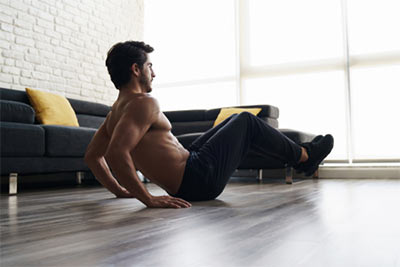
Limb isolation is the term we use for exercises that require you to keep the core stable and consistent, while also moving a limb. This is something we think is amazingly important, but also painfully overlooked. In this article I am breaking it down for you and offering up some amazing core training you didn’t know you needed. This will bridge the gap between core exercises and compound exercises. Let’s get into where you start and what you can do…
Core Strength First – Can You Stay Controlled?
Good core strength and control is one of the most important things you need to develop. This is even more true when it comes to setting the stage for developing into better overall, well-rounded athleticism and better compound exercises. Heavy lifting is based on this strong core. However, no amount of sit-ups and planks will sort out your core if you don’t practice specific training. This is where limb isolation comes into it; it’s the bridge between the two. The reason we use limb isolation exercises is to practice keeping the core in place while we move the limbs. This is the difference between the plank and the heavy squat. The heavy squat involves keeping that core stability while also bending at the hips, knees, and ankles. Limb isolation exercises practice this kind of movement during a single, static, strong and unmoving core. The trunk needs to remain pressurised throughout, and practice here is going to pay off when it comes to a stiff spine during your heavy lifts.
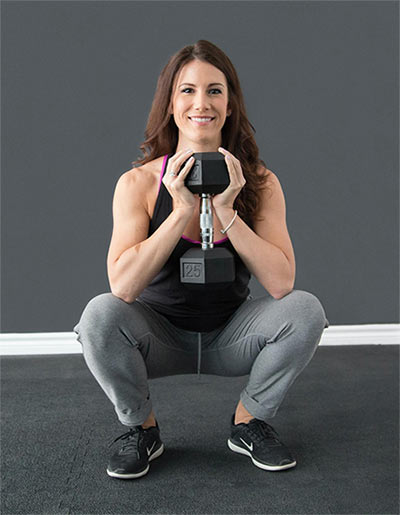
Core Pressurization Principles
When we talk about keeping the core stable and pressurized, we are talking about the neutral spine position you need to develop and practice. From here, we have a pressurized core to maintain, but if you can’t achieve this position then you’re going to struggle to make limb isolation exercise effective.
1. Start Proximal, Move Distal
Once you’re in a stable, neutral spine position, the next step is to move from proximal to distal with your choice of exercise. What does this mean? In simple terms, it means using the joints nearest the core first, and then developing control there before working on anything lower down.
Control has to begin in the core, and then be developed successfully at each joint before moving onto the next. How can you control your knee when you can’t control your core or hips? That’s how injuries happen.
Equally, you can’t control your elbow and wrist if you can’t control your shoulder and thoracic spine effectively. The best you might be able to achieve is compensating with something else, but that’s a recipe for long-term disaster when that unstable or poorly-controlled structure is placed under heavy load, in a bench press for example.
Starting proximal means addressing things in the right order and building an effective foundation of simple movement before adding complexity.
2. Range Over Weight
Adding range and movement variation should come before adding load or challenge in a limb-isolation exercise. There’s no point loading a movement you’re doing wrong, as this simply serves to improve your ability to do it wrong.
The addition of range and control are primary, before we even consider loading. For example, the knee tuck that we often see for controlling hip flexion is better than the lying leg raise for a beginner, because it asks us to move less load, at a better position, and that can be practice more precisely.
As strength develops, this should be addressed through slowly straightening the legs and repeating the workout/exercise in that new, more challenging position. This ensures proper muscular development while staying within the realm of effective, controlled exercise.
You can add weight, and challenge exercises like leg raises and hollow holds allow for this, but it should be when you’ve built a surplus of strength. Progressing before you’ve maxed out your current step in the process is a bad idea and will only lead to sloppy technique and wasted time.
3. 3D Movement
It’s easy to forget about non-sagittal movement when performing limb isolation. Many of the most popular and important exercises are all operating in this forward-backward, up-down plane. However, other forms of movement are also crucial.
Improving your core control during lateral and rotational exercises is also crucial. These tend to be far more demanding, but they are also crucially important. Exercises like the side leg lifts challenge the core in unusual directions that you’re probably already very weak in.
This isn’t a reason to avoid them. It’s an indication of how you’ve trained them until now. This means more training, not less, will be the solution. Remedying this kind of weakness is really the best way to address the problem.
Upper Body Limb Isolation Exercises
There are fewer upper body examples, as they can be broken down into the T-spine and the shoulders. These are the areas that move, and they are crucial for things like the bench press where core stability is required while moving some of the spine into a non-neutral position and moving at the shoulder joint.
1. T-Spine Raises
Upper body limb isolation only works when you’re able to control the segments of the spine. The core effects the lumbar spine, primarily, and being able to keep this pressure while extending the thoracic spine is key.
Laying on the floor, keeping the core tight, extend the upper back and show off the chest. This is a great hold, and you can move through it for reps as long as you pause the top position. This is the foundation for many other movements on this list.
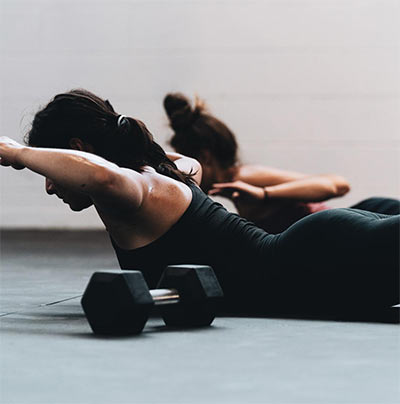
2. Swimmer Holds
These are a funky little movements that bring variety and complex movement to the upper body. The core is set, then the thoracic spine is extended, and then the shoulder joint moves through its full range of motion in the challenging directions.
This is a fantastic exercise for warming up, cooling down, and effective mobility at home. It’s a must do for anyone who is into heavy lifting, overhead sports, or looking for better shoulder health!
3. Lying Lateral Raises
You’re lying on your back, core tight, and you’re lowering weights to the floor sideways, with straight arms. What’s the challenge? You suck at it and your body performs poorly, compromising your upper back and core-stability to do it.
This is true to the sides and overhead, which are represented by the lying lateral raise and the dumbbell pullover respectively.
The lying lateral raise helps to stabilize the spine from bottom to top, while practicing movement in the shoulders and scapular. These two get mixed up a lot, and it’s one reason we see so many shoulder and upper back pain complaints. You need to stabilize and control these areas, or they’ll suffer.
4. Pull-Over
Unlike the regular dumbbell pull over, this one uses two light dumbbells. The idea is to keep the arms at the same angle throughout, with a stable core, and raise the dumbbells over the head, like in a regular pullover.
The idea is to keep the core tight while the shoulders open, and not compensate with the thoracic spine. This can be challenging initially, but it is important for remaining tight and effective while moving the shoulder joint.
It’s a form of stability work for the core that is underrated and can be very useful for overhead athletes and anyone with tight shoulder and pectoralis muscles. Controlling this range effectively, without compensation, is how we improve long-term health and mobility.
As ever, add range and practice reps before worrying about weight. This is likely to be very light to begin with!

Hip Examples
The hips and knees are very important since they are constantly weight-bearing, as well as being associated with the real heavy lifting of squats and deadlifts. They’re also most at-risk through things like sport and activity where odd footing and trips/falls are most worrying.
The injury of the hips, knees, and ankles are all connected. Improving core strength and integrating it with how you move these lower body joints is how you protect yourself from injury and prevent feature issues.
1. Deadbug and Bird-Dog
This is the quintessential limb isolation movement. As a whole-body exercise, it’s a great choice, but you begin with the lower body.
Effectively flexing and extending the hip on one side at a time is how we develop control, strength, and stability in the hips and core. The dead bug offers a great opportunity to keep the trunk stable while practicing this.
Adding in the opposite arm to this movement makes it more difficult still. Even more difficult is possible, with straight arms and legs moving on opposite sides. This produces serious core challenges and helps to really isolate the hip joint movement we’re looking for.
The bird dog is the opposite of this movement, being inverted into an all-fours position. It challenges the core in the opposite direction and is notably harder. Combining the two into regular exercise is going to provide excellent all-round coverage for most people.
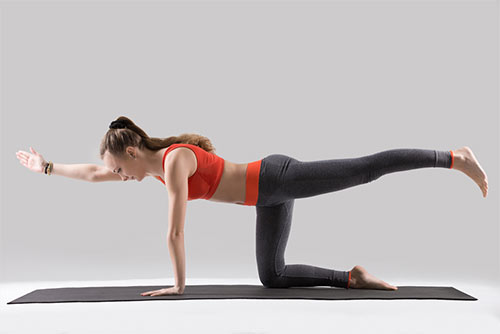
2. Hanging Knee/Leg Raises
The development of hip flexion continues with two-legged exercises like the knee or leg raise is a great way of building core strength that carries over well to sport and exercise.
The leg raise and knee tuck, without disengaging the core on the lowering portion, is a great limb isolation exercise. Keep the back in contact with the floor and maintain that core position while lowering legs towards the floor and then raising them, with no movement of the spine.
These are loaded by slowly extending the knees and thus making the movement more difficult. Controlling reps through longer ranges on a bench or other surface, and developing loading slowly over time.
If you can’t keep the core in place, and you’re tilting the hips, then you’re missing the benefits of the exercise!
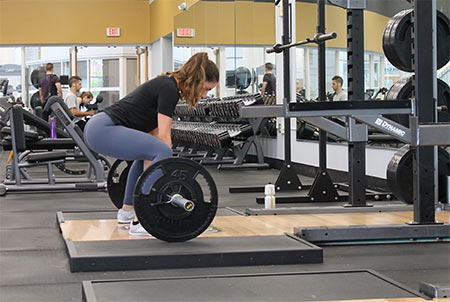
3. Paused Romanian Deadlift
This is a great exercise to train with, and when learning to control the core it’s a fantastic tool. With an empty barbell or a light implement, such as a kettlebell or dumbbell, stand straight before unlocking the knees, rotating them outwards, and hinging at the hips.
The core should stay stable and solid throughout, with the hips doing all the work. The idea is to reach the hips back while keeping the knees in position and the core/back entirely neutral and engaged throughout.
This is a learning tool, you’re not using it as a strengthening exercise yet. Focus on the movement and make sure that the movement stops when the hips stop, and you’re actively contracting the core muscles in the bottom position!
Final Thoughts
Once you’ve developed control and strength in these full range, limb-isolating movements, you can look towards bridging the gap with more complex exercises. These include things like lunges and other complex movements.
The idea is to set a foundation of great stability to use in complex exercises and increasing loading over time. Having the skill to keep the core stable while you move your limbs is the key to setting up effective strength training for the long-term, and getting the most of your time in the gym!
Practice these exercises and watch your core strength develop, and carry over to your heavy exercise where that trunk stability really matters!







